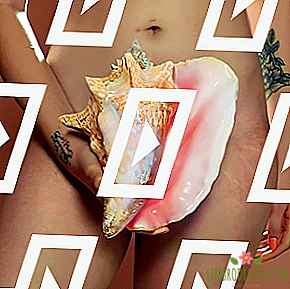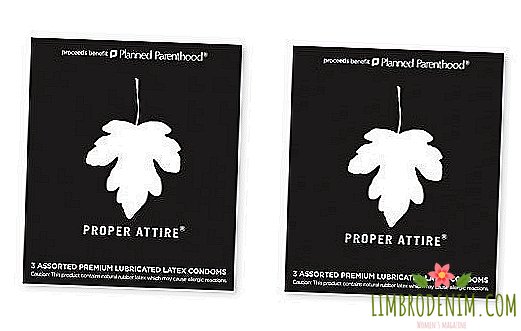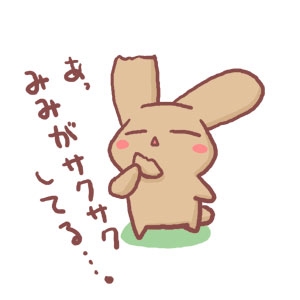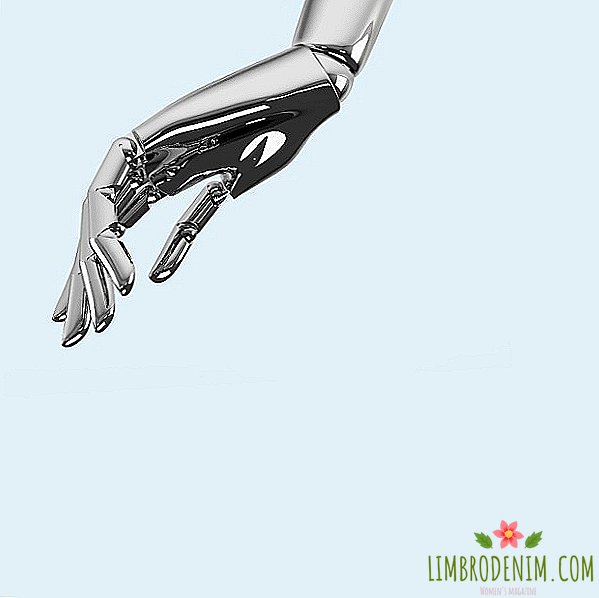Face Charts, Vaseline and Ideal Arrows: How to become a makeup artist

Sergey Naumov, a freelance makeup artist who had previously worked for M.A.C., told Look At Me about how to make a portfolio, where to go to study and what is most unpleasant in his work.
How it all began
I never felt any particular craving for makeup and drawing - my current profession was predetermined by chance. I have always been a creative person, I even dreamed of sewing clothes, but I did not draw better than other children. At 18, I moved to Moscow, I had nowhere to live, and I really needed money. There were options: return to yourself or stay and start working - I chose the latter. I came to an interview with a girl who then worked in MAAS in a high position. Then I got my first experience of visage: before the interview I painted my friend in the bathroom, because we thought it would be necessary to make up someone there. I made him some terrible red lips and crooked arrows.
But here I come to that girl, and as if jokingly she tells me: "Sell me this turquoise waterproof liner." I did it for five plus, saying that the eyeliner is universal: it can be applied on the lips, on the eyes and on the eyebrows, but generally anywhere. She understood perfectly well that I was no makeup artist, but decided to send me to the store and see how I would manage there.
I arrived at the MAAS corner at TsUM, stood for two hours, without offering anything to anyone and not understanding what to do. On the first day there was some kind of promotion: it was necessary to make the correction with purple shadows, but I could not do anything. Saved by the fact that I know how to communicate with people and can persuade them to anything. These were the times when I painted huge red lips for everyone, with a pencil, shine - that was my favorite feature.
I was just starting, but I wanted more. I worked a lot, developed independently, read books, learned to draw more professionally.
Face charts
Ideally, before you start practicing in public, you need to learn how to make face charts on paper. The face chart is a make-up scheme, that is, a piece of watercolor paper, where you should put shadows, lipstick, blush on a painted face — in a word, those products that are used for ordinary makeup. I drew them every day not one by one, filled my hand, and soon my works began to rank among the best in Russia. Although you don’t have a lively face in front of you, training gives results: over time you begin to feel brushes, combinations of colors and textures. In general, it is not easy to make a face-chart: you must drive the shadows very carefully so that the color of the product that we see in the jar is exactly on paper. Just a brush to apply will not work: there will be dirty spots, the shadows will form dense ugly pieces. When you learn to do such complex things on paper, there will be no such problems with the face of a person.
But constant practice on paper is almost the utopian option, so few do, because the practice takes place in a shop where the main goal is to sell. Ideally, after applying make-up, you draw the whole process on paper to a person so that he can then repeat it himself. Face charts can and should be done at work, for clients, and in their free time, for their own training.
Photographer and makeup artist
I continued to work in MAAS until I met the photographer Yenisei. As every woman dreams of finding the perfect tailor, any aspiring makeup artist wants to find the perfect photographer.
I found him completely random on Facebook: he was already known both in my company and among professional makeup artists. I wrote to him and offered to work together, then not yet as a makeup artist and photographer, but as a photographer and model. I said that I worked as a makeup artist, and we decided to shoot my work. At that time he had a permanent make-up artist, with whom he worked in a pair, but for some reason they stopped cooperating.
I made him terrible red lips and curved arrows
When you have a photographer, there are suggestions: shooting, magazines, covers, advertising campaigns and just a huge amount of contacts with which you then go on. You have regular customers, important from both commercial and creative points of view, acquaintance with beauty editors of magazines, with the best hair stylists. Plus the feature of the photo is that you are much better on it than in life, you see all your mistakes.
For the portfolio I had to do a lot of shooting. For each, as a rule, the makeup artist creates three images. Any shooting is exhausting, because you are constantly on your feet, constantly analyzing, reflecting on what and where to put, how and what to shade. Only with time and experience you begin to do it automatically, but at first it is always hard.
Job
Now most of my work consists of commercial shots for advertising and fashion shooting of creative projects. I worked two or three times at Russian shows, and I didn’t like this experience very much. No make-up artist will tell you that he wants to work on a pattern and repeat what the lead specialist came up with. It is more interesting to get acquainted with designers and their collections and invent makeup yourself. However, in MAAS I had a chance to get into the team that deals with shows, but again, because of my ambition, the management decided that I would not be able to tune out and do everything, although I think I could.
A year ago, my dream was the post of chief makeup artist of some cosmetic brand, no matter what. I wanted to be famous and very cool, but over time, this desire became less and less, although I still would not mind being tied to some brand. First of all, this is stability: you earned forty thousand in a week and you sit idle for two weeks, and then a huge project falls on you, after which there is a lull again. Secondly, it is very prestigious to have a record of a company in a resume. For example, “the leading make-up artist of the brand M.A.S.” - that says it all.
"Leading make-up artist of the brand M.A.S" - that says it all
My dream is to work with Alex Box. Just stand next to her when she comes up with another crazy makeup, and understand how she does it, what it feels like. She is very inspiring to me, and I, looking at her pictures, want to look at all this live.
Now I am not only a freelancer, but also a permanent makeup teacher in one of the studios. Next year, it would be good to go abroad for three or four months, to Paris or New York, and work with foreign specialists, because fashion is not born in Russia, and makeup is very strongly connected with it. But to work abroad you need to know almost perfect English. For now, I can only come in and say, "Hi dude, how are you?" But I need to explain why I put a glossier here, and a more matte tone here, and here my knowledge is not enough.
Experience
People who graduate now from all sorts of visage schools sometimes know the theory very well, but they have no practical skills. Practice, practice, practice, experience, experience and experience - this is what a newcomer needs. Know products, go to stores, watch how professionals work, learn all sorts of techniques and paint everyone you can to learn how to work with different types. It is necessary to get down to business thoroughly when you have no doubt that this is exactly what you need. If you follow fashion and everything that is happening now in this environment, then it will be much easier to create something of your own. If you can not get a professional art education or go to a makeup school, you need a lot of independent work on drawing.
Practice, practice, practice, experience, experience and experience
It is important to practice symmetry, because you can perfectly draw an arrow on your right eye, but you cannot repeat the same with the left, and this will be a complete failure. Draw face charts, experiment. But with all these complicated makeups we should not forget the classics: even tone, red lipstick, perfect arrows - this is the base, something that every makeup artist should be able to do without thinking, blindfolded.
The first year and a half make-up artist just fills his hand, he trains a lot. And only then you can start inventing some of your own chips both in the make-up and when collecting the case: your style is developed, brushes appear that other makeup artists do not have, or you just use them in your own way. So in my beautician appeared Vaseline, which gives the skin some incredible alien radiance, and a piece of soap to whiten your eyebrows.
Every make-up artist has his own ideas, which he usually does not share with others. I have broken mascara brushes in my case to brush my eyebrows, a dental spatula, on which it is very convenient to apply textures and mix them there, different jars with ready-made mixed shades. The MAAS cosmetics still dominates in my briefcase, although I no longer work there. MAAS are very loyal employers who stimulate their employees, donate their cosmetics, conduct various trainings on seasonal trends.
Of course, you always collect the case yourself, based on your needs, although something can be peeped from others. The most important thing when you start to focus on a single product, on a single color scheme, just push it aside and go further, because makeup becomes very uniform, and in the make-up artist profession, novelty and experiment play a major role. But I always have the means to create a classic image, and some completely crazy art objects. The most basic tools, without which you can not do and with which you should start - this is all for the perfect tone. Doing makeup, you can generally finish at the stage of tone, and you get a very natural option. And you can add blue arrows and green blush, and it will be fashion. Makeup artist should not be afraid of experiments: you need to try to do anything, if only it does not work out smoothly and with one comb. It is important to understand what they want from you. Need a beauty option - you slightly emphasize the dignity of the face: tone, arrows. They want a thrash - pull the net over your face and go through the air race, you get art.
The makeup artist has the closest connection with fashion and clothing design. It is the designers who set the fashion for textures and colors, which immediately switches to makeup. The clothes have become fashionable complex colors - you need to be able to mix and apply them to everything: lips, eyes, skin. If there is no opportunity to undergo training, simply turn on the Fashion TV channel and watch what the designers have come up with.
It happens that you work with a person not for the first time, they already trust you and once they say: "Well, we know that you will do everything perfectly, here is a model, do what you want." At such moments, I just become like Harry Potter after "Ostolbin!" and I can not understand what to do. Here you need to sensibly analyze what kind of project, what audience is designed for, what should be the reaction to the result. Relatively speaking, if this is a story for metalworkers who listen to hard rock and drink in the courtyard, they will understand metal eyebrows and black lipstick.
In any field, specialists are always appreciated, who in a short time give out a high-quality and original product. You need to train yourself for a while and look for some of your own chips, because nobody needs a monotonous copy-paste.
If you love your job, then the most unpleasantness can be, perhaps, the washing of brushes.
I distribute the time for makeup: if it is one accent, lips or eyes, - 10 minutes, if the tone is even and again one accent - 25 minutes. For a full makeup - an hour, for a complex art - a maximum of 1.5 hours. In the allotted time, you need to have time to draw a face chart to remember the overall picture and the products that were used. If the makeup artist applies lipstick for half an hour, he is not interesting to anyone.
The coolest thing about work is to see the result in a high-quality processed photo. You look and understand that this is not a picture downloaded from Yandex, but your work. And the realization that this make-up is no longer there, and someday someone will look and say: “Wow, this is so beautiful, and who did it?” - the most pleasant thing. In the work of a makeup artist, it is important that you can never repeat one-on-one what has already happened. That is, you can copy someone else's style, but it will still not be like that, because you miss everything through yourself.
If you love your job, then the most unpleasantness can be perhaps the washing of brushes. After the shooting, there are no forces anymore, but here you will look at your Belt (Case for brushes -Prim. ed.), and there are 59 dirty brushes. And then you wash them with shampoo, balm, dry, fold, and the next day you shoot again, and in the evening will be the same.
5 tips for a beginner makeup artist:
| Learn EnglishTo learn the language at school, college, even at home with a textbook for first-graders, because without English there is nowhere. Do you want to get an internship or work abroad - without knowing the language, nothing will come of it. |
| Practice on paper and people.All skills come with experience. If you can not do makeup to different people, you can draw face charts on paper. But I would never believe that there is such a girlfriend who will not agree to become your model. |
| Follow the fashion and trends in makeupFashion TV, blogs, Look At Me, any inspirational pictures - the more you let it through you, the more you will be left. You need to learn how to do and classic makeup, and the corresponding time. |
| Start datingMeet on Facebook and special sites with photographers, makeup artists, stylists - in short, everyone who can be useful to you. Using the Internet is very easy to do, and if you are talented, there will always be someone who can help you. |
| Develop a personal styleAt the initial stage it is good to copy the works of others, but this is not enough for future work. In the process of work, on the basis of his experience, a makeup artist should have his own chips, this also applies to the technical side of the issue, and to the aesthetic one. |









